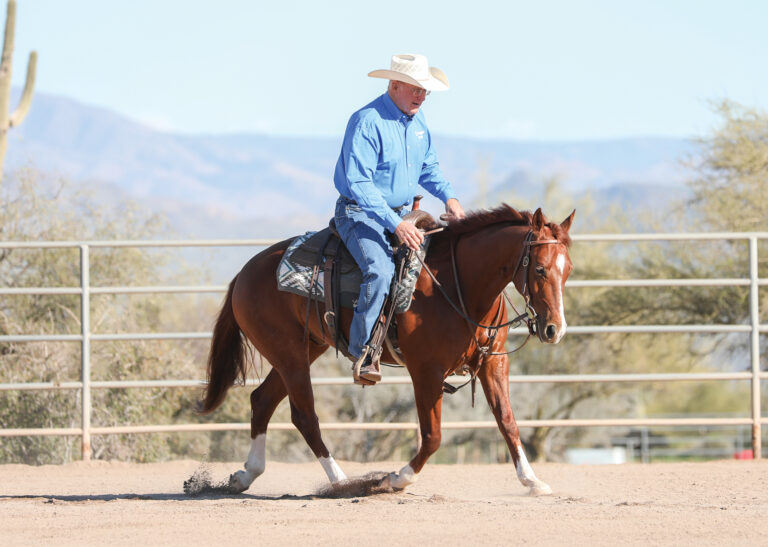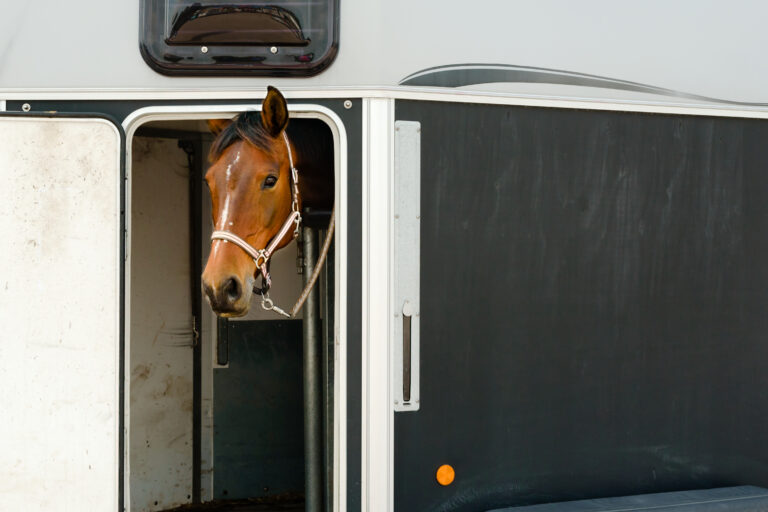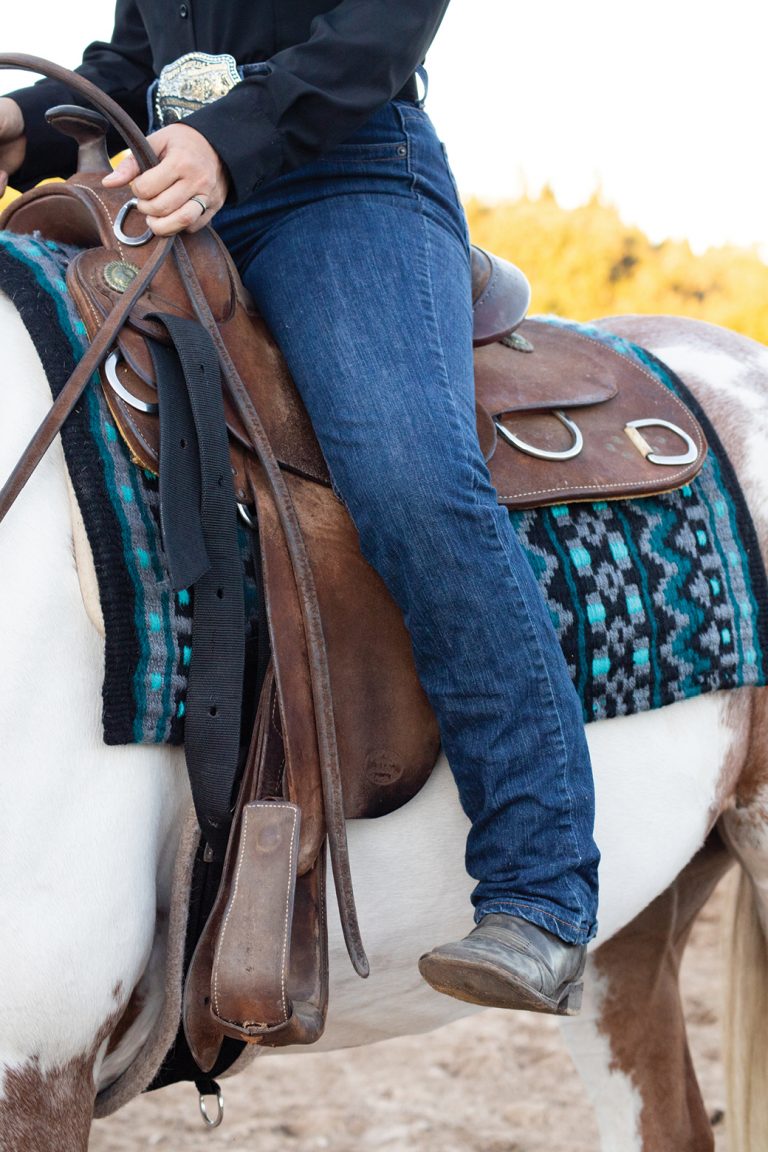A performance horse takes a lot of pounding on his legs and feet, especially if he competes in speed events. If you run barrels, as I do, your horse is subject to the stresses of sprinting, sudden slowdowns, and sharp turns.
To keep my barrel horses sound over the long haul, I’ve developed a plan that addresses both the maintenance needs of hard-working legs, and the ground-savvy I need as a rider to give my horses their best chance to perform well and avoid injury.
I’m going to share all my strategies with you. I’ll talk first about ground issues, then show you the key ingredients of my leg-maintenance plan.
Ground Control
In a perfect world, every competitive venue would have the same ideal ground, and every horse would run well on it. We don’t live in a perfect world, of course, but there are things you can do to improve the odds your horse will perform well and safely at all the events on your schedule.
First, know that horses have their own preferences. Some run better on deeper ground; others prefer their ground a bit harder and slicker. Knowing which your horse favors will guide you when you plan how to compensate for different types of ground (more on that in the box, “Ride It Right”).
Then, do a little detective work before the event in question to find out what the ground there will be like. Ground conditions can vary for a variety of reasons, and one of them is geographic area. Ground in California and Arizona, for example, tends to be harder and slicker on average, while in Texas and Florida it tends to be deeper and therefore stickier.
How often the ground is groomed can magnify or minimize these differences. For example, at rodeos the ground is typically dragged after every 10 or 12 runs. If you and your horse go toward the end of the set, the “bottom” of the ground, whether deep or shallow, will be more apparent by the time of your run.
By contrast, at single-event venues like jackpots, the ground is groomed after every five or so runs. That equalizes the effect of the ground’s depth somewhat, making it a little less critical.
If you don’t already know what the ground will be like at the event you’re attending, call around among people you trust to find out. If possible, don’t take just one person’s opinion; try to find two or three riders who are familiar with the ground in question and can describe it for you. That way, the individual preferences of their own horses won’t overly influence the information you gather.
If it turns out the ground at the event will be different from what you have in your own arena, try to find ground that approximates the event’s to make a few practice runs on. For example, if your ground is deep and the event’s will be relatively shallower/slicker, see if you can find someone—a neighbor or a friend’s place you can haul to?—who has shallow ground you can practice on before the event.
The more prepared you and your horse are, the less chance the ground you run on will slow you down or cause an injury.
Leg Work
You’ve got ground issues under control; now let’s talk about what I believe is the most important aspect of keeping your horse sound: preventive maintenance.
In the photos that follow, I’ll show you the various strategies I use to keep my horse’s legs and feet in good shape to head off work-related injuries.
1. A trim, fit horse won’t put the extra stress on joints and tendons that an overweight horse will. Plenty of conditioning exercise—and walking can be part of that program—will help keep your horse and his legs in shape to perform.
2. If you don’t have a Game Ready machine (see #5), simply hosing your horse’s legs with a cold stream of water is the next best thing. Or perhaps you have a cool stream to stand your horse in. However you manage it, I believe you can’t do too much cold therapy.
3. I use leg protection on my horses whether I’m riding, exercising, or competing. Splint boots provide support and help keep a wayward hoof from injuring the splint-bone area, while bell boots protect around the coronet. Anything that prevents a potential injury is well worth your time, effort, and expense.
4. Excellent professional hoof care is essential for any performance horse. For barrel horses, in particular, you need someone who really understands the forces that come to bear on a running, turning athlete. If your current farrier isn’t up to the task, ask around to find one who is.
5. Cold compression, such as that provided by a Game Ready machine, is great for keeping legs tight and healthy, and for stopping small injuries from becoming big ones. I use it before and after a competition for best results.
6. After a competition or any hard workout, stable bandages provide support and help prevent stocking up. You can apply a light, non-blistering liniment under them for extra tightening. I also think wraps like these provide the best protection during hauling. A caution, however: Don’t wrap your horse’s legs unless you know how to do it properly. Badly applied wraps can do more harm than good. (See Web icon for more assistance.)
7. These are Soft Ride boots with a shock-absorbing sole and cushioned insert; I use them during hauling, and they’re also useful if your horse has to stand tied on pavement at an event. Put them on all four feet or just the front (but note that they’re not for riding).
8. When the weather’s hot and I don’t want to wrap a leg, I use a poultice instead to draw out soreness and tighten tendons. When I’m competing and hauling, I poultice every day, after the Game Ready (or cold-hosing) treatment. If it’s cool, I may put standing wraps on over the poultice and leave it overnight. There are many good poultice applications; follow the manufacturer’s instructions. (In a pinch, alcohol can substitute for a poultice to help cool a leg.)
9. These odd-looking items aren’t bell boots; they’re coronet wraps containing magnets to stimulate blood flow and promote healing. These particular wraps are helpful for foot problems; there are also wraps and boots containing magnets for the knees, hocks, and other joints. I use magnets on myself as well as on my horses, and I believe that they really do help injuries to heal.
Sherry Cervi holds two world championships in barrel racing from the Women’s Professional Rodeo Association. She’s qualified for the Wrangler National Finals Rodeo multiple times, and in 1999 she won the NFR average, taking home more money than anyone there—including the all-around cowboys. Sherry rides and trains out of her facility in Marana, Arizona.




